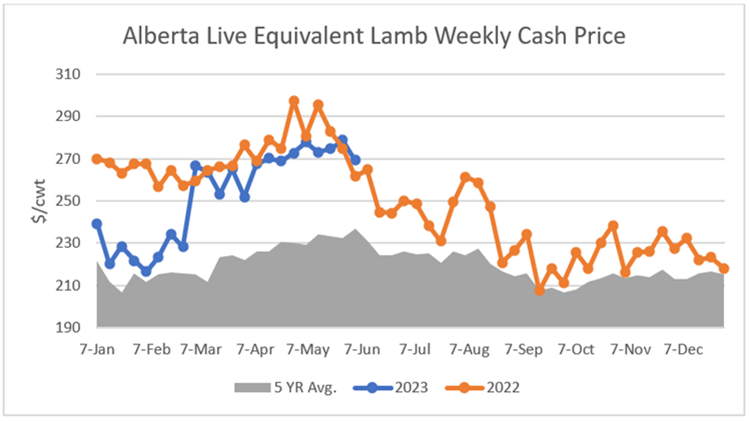Non-urgent government operations are closed December 24 to January 1, reopening January 2. View available services during this period.
See event listings and more articles in this edition of Agri-News: June 19, 2023 issue
“The long-term outlook for global sheep meat consumption is strong, due to economic development, growing populations and household income growth,” says Ann Boyda, provincial livestock market analyst with the Alberta government. “As always there are several factors that go into that long-term outlook with Australia, New Zealand, China and the United States all playing key roles.”
Australia is the largest global market supplier with the country’s 2023 lamb production predicted to increase by 3.5% over 2022. The East Asian markets drive much of the demand for Australian sheep meat and the market continues to grow. Two new market agreements, the Australia-United Kingdom Free Trade Agreement and the Australia-India Comprehensive Economic Cooperation Agreement, will fuel future growth. Australia may face some challenges, however, associated with market access and currency fluctuation risks that come with its dependence on overseas markets.
New Zealand is the second largest global sheep meat exporter, exporting over 90% of its sheep meat production. Beef + Lamb New Zealand’s mid-season update, March 2023, indicates that a fall in demand from China drove a decrease in sheep meat. The average value of lamb decreased 11% for the 2022-23 year and export volumes are forecast to be down 3%.
China has the world’s largest sheep flock (316 million head in 2021) and accounts for one third of global sheep meat production. However, China remains a net importer. Sheep meat accounts for a small portion of dietary protein in China but rose due to African Swine Fever’s impact on pork production.
With the United States (U.S.) consumer, lamb remains more of a niche product primarily for specific holidays and is often eaten away from home. The Livestock Market Information Center (LMIC) predicts a decrease in lamb production in the U.S. for 2023 which should see feeder and slaughter lamb prices hold strong through the remainder of the year.
Image 1. U.S. Quarterly Feeder Lamb Prices
Image 2. U.S. Quarterly Slaughter Lamb Prices
“Here in Alberta the lamb market has remained resilient with provincial live lamb prices for the period January through April 2023 at $238.71 per hundredweight, down 8.8% from the same period in 2022,” states Boyda. “And while lamb consumption may be waning as consumers face inflationary pressures, Alberta live lamb prices are nearly 13% above the 5-year average price for the same period.”
Image 3. Alberta Lamb Weekly Cash Price

“Price volatility remains at the auction markets,” concludes Boyda. “Average weekly auction market prices for the period January through June 9, 2023, were $222.45 per hundredweight for market lamb and $262.07 per hundredweight for feeder lamb. Both those show a decline of nearly 20% over the same period last year.”
Contact
Connect with Ann Boyda for more information:
Phone: 780-422-4088
Sign up for Agri-News
Start every Monday with the week’s top agricultural stories and latest updates.
Read about all things agriculture at Alberta.ca/agri-news

